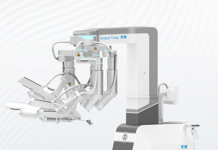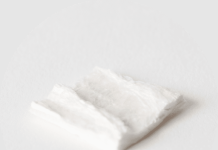Anatomic Implants is believed to be the first company to develop and patent a 1st metatarsophalangeal (MTP) joint that ‘nearly perfectly’ replicates the human anatomy. It has developed this MTP toe joint with metal 3D printing technology.
Working with AddUp, Anatomic Implants has utilised the FormUp 350 metal 3D printing system to qualify the implant for submission to the FDA. With the FormUp 350, Anatomic Implants has produced the MTP toe joint – which has been designed with fine detailed lattice structures – in a titanium material.
Related: Aurora Spine secures second patent for DEXA Technology in US
The complex lattice geometries have been integrated to facilitate a ‘near perfect’ replication of the MTP toe joint, which is located at the base of the big toe and is one of the three main points used for balance. It is also often the first joint in the foot to develop osteoarthritis. The market for MTP joint reconstruction, however, has been deemed by Anatomic Implants to be underserved. There are very few products, according to Anatomic Implants, with none offering the potential to support bone-in growth as well as the MTP joint.
Anatomic Implants has thus turned to additive manufacturing technology to promote osseointegration through the integration of a porous structure in its 3D printed MTP toe joint replacement product. This capacity for osseointegration will give the implant a much higher chance of bonding to the bone, helping to reduce the likelihood of the implant being rejected by the body.
By submitting a 510(k) to the FDA, a comprehensive review of safety and performance data for the implant will now be carried out to determine if it is ‘substantially equivalent’ to an implant already on the market. Having already completed several tests, Anatomic Implants is expecting to receive FDA 510(k) clearance by Q3 2024.
“With 1st MTP joint replacement being a largely underserved market, and medical device companies building lattice structures into implantables since the mid 2000’s, Dr. [Scott W.] Nutter and I sought out to make a more anatomic design by leveraging the latest technologies adopted by the industry & FDA,” commented Anatomic Implants President, David Nutter. “We were excited to partner with AddUp to achieve 510(k) clearance after learning about their proprietary 3D printing technology and seeing how it could benefit the development of the Anatomic Great Toe Joint. We look forward to leveraging the AddUp team and their expertise to validate the world’s first 3D printed toe joint replacement on their FormUp 350.”
“AddUp is committed to supporting the development of cutting-edge solutions for the medical market,” added AddUp Inc. Deputy CEO, Nick Estock. “Our team at the AddUp Solution Center has the expertise on FDA regulations and qualification protocols to provide a proactive approach to regulatory compliance essential for a successful 510(k) submission. We are excited to be supporting Anatomic Implants through this process to bring the first additively manufactured toe joint replacement to market.”






